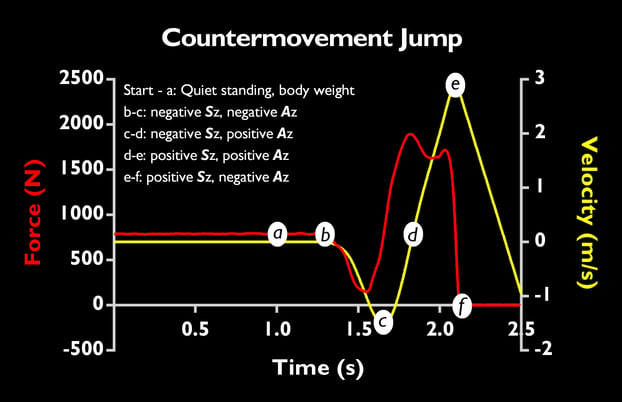Introduction
What better way to head into our fifth blog post than with an acronym? Not just any old acronym though, but (hopefully) a super useful one that describes a simple system to help guide the way you collect, review, and apply your force plate data.
Now, before I go on I think that I probably owe you a brief explanation of where this (quite frankly ridiculous) acronym came from so let me take you back to the first half of the nineties… Brit Pop was making waves, England was getting knocked out of the (soccer) World Cup on penalties, and yours truly began a brief stint as a member of Her Majesty’s Armed Forces. For five years I served in the First Battalion Coldstream Guards, the finest regiment in the British Army. Each British Army Infantry Unit is essentially run by its Regimental Sergeant Major. They spend most of their time and energy maintaining the discipline of their unit. This would then, in turn, typically rely on choice words being shouted at errant soldiers. However, to avoid turning the atmosphere over the barracks blue, fabulous terms like ‘scabby dog’ and ‘ship’s cat’ were often used and I’m afraid that these have both stuck with me since the day I left my barracks in Germany from the last time all the way back in 1995.

What is the SCABBY DOG system?
Well, briefly it’s as follows:
-
Standardize
-
Collect
-
Avoid Black Boxes
-
Y (why?)
-
Decipher
-
Observe
-
Guide
The remainder of this post will take you through the thought process that led to the development of this system to help answer the most commonly asked questions about this area.
Standardize
First things first. I’m working on the assumption that you’re either using a force plate system or are seriously considering getting one. Before we go too far, however, I think it’s worth emphasizing a point I made in the first blog post: do you absolutely need a force plate system? Remember, the simple (and honest) answer is ‘no’! However, I should also reiterate that force-time data can really help inform your day-to-day practice.

So, why standardize?
To get good data you must standardize the test you get the data from. And this isn’t unique to force plate testing. Any test that you use to collect data to help inform your day-to-day practice should be standardized. Put simply, standardizing tests requires you to exert as much control on the way the test is performed as possible. Many may worry that by controlling a test an element of its ecological validity may be affected. There is an element of truth to this. However, by doing this you can limit the factors that may contribute to any test-to-test differences and so can have greater confidence in your data.
Put simply, control the controllables. Identify what the controllables might be, remembering that these are the factors that could influence the test, and carefully develop your testing protocols accordingly. Write these down. Make sure that your colleagues and athletes know what they are and why they’re important – simplify your testing practice.
Collect
Some might be wondering why standardization wasn’t controlled. That’s an easy one to answer. It’s because ‘C’ stands for collect, and collect demands its own place.
Why?

Well, first because if you don’t collect data you won’t have any data to help inform your practice. Obvious, right? Maybe, but there a few things that I think need to be elaborated on to really drive home the importance of this point.
-
Collect often – make it part of your routine. I don’t mean that you should just mindlessly collect data just because. Rather, once you’ve developed, scrutinized, and defended your rationale for using a force plate system then you need to start experimenting. Have a serious think about how often it might be useful, or indeed logistically possible to collect data. With that in mind, you should then strive to collect data as often as possible. Identify key times to collect your data and be prepared to defend (even if just to yourself) why these times might be appropriate.
-
Collect appropriately – if you’re familiar with the force plate-based literature you’ll know that a good method section relies on the author(s) providing detail. The method section should enable the reader to replicate the study. Similarly, your protocol should use a similar approach and while this almost drifts into standardized territory, these elements are key…
-
Sampling frequency: I think, and please correct me if I’m wrong, that all of the commercially available force plate systems now enable the user to record their data at 1000 Hz, that’s 1000 samples a second, 1 per millisecond. Use this consistently (and I really must emphasize consistently). Anything less and you risk missing important data points, especially in the fast movements (think landing-type scenarios)
-
Order: this brings us back to the protocol of your standardized test. Yes, I’ve already mentioned this but it is really, really important. Control what you athletes do, use a standardized script that you use to explain key elements of the test (e.g. jump as high and fast as possible, keep your hands on your hips, stay perfectly still until I give the word of command: ‘go!’)
Avoid Black Boxes
So, what on earth could this mean? The ‘black box’ refers to how the force data is processed, how it is converted from thousands of rows of ‘how hard you’ve pushed or pulled’ data (think of a spreadsheet) to, say, ‘how quickly you’ve moved’ (velocity) data. Or, more importantly, the mysticism that often surrounds this process.
The recent advent of more user-friendly force plate systems has been incredibly useful for practitioners and researchers. This is a good thing. However, it can encourage ignorance. Now, please take a deep breath and hear me out here. Regardless of why you’re recording force data, you should take as much ownership of your data as possible. This includes understanding how your force data is processed. This is critical for two key reasons:
-
It enables you to gain a far deeper understanding of what the data represent
-
It provides you with a far greater understanding of where some subtle differences in data may come from

The bottom line, before you invest in a force plate system you should have honest conversations with the force plate manufacturers to ensure that you understand how you’ll get your data.
This is probably the most important part of this whole thing because it can have a huge impact on your understanding of data and the factors that effect it.
We’re not talking rocket science here by the way. Force data isn’t processed with magic! If you don’t believe me please check out the two Strength and Conditioning Journal articles that Shyam Chavda has put together on how to process your force data in spreadsheets. If you have a system that will do this for you, make sure that the company is willing to share how the system does this or find another company.
Decipher
Onwards…
So, you’ve taken as much ownership of your data as you can. Cool! The final three points of this system are pretty straight forward but, in my experience, they really do warrant me repeating them.
Decipher simply refers to how you use your data, initially at least. If you didn’t read my last blog post, do yourself a favor and read it. This will help you decide what variables you choose to use and why, dictating what you’ll need to decipher. Back to the boring stuff again… understand what you can get from these force data. This is super important so I’m going to repeat it: understand what you can get from you force data. This forms the basis of the next point: Observe.

Observe
This might surprise you, but getting new tech can often lead to practitioners paying the new toy far more attention than they should. As a practitioner, you are essentially a people person. With that in mind, always use your force plate (or any tech for that matter) with your athlete(s) in mind. Observe how different aspects of their day-to-day life (competition, training, injury) influence the force data you record from them. Talk to them. Use the force plate to help you build as complete a picture of the athlete as possible. It is a tool. Part of the process. Not the magic bullet solution. Please keep this in mind and once you’ve deciphered your data and observed any changes in the data, the athlete can use this to guide your practice.

Guide
Finally, we made it. I’m kind of glad this is the last because it’s where you practitioners come into their own. This is your territory. Use your understanding of the data you’ve recorded, combine it with any changes you observe, and plan your athletes’ training (and recovery) accordingly.

Now, this is a deliberately short session and you might wonder why. The answer is an easy one. This is not my area. This is where I hand over to you practitioners. I can help you understand what your force metrics (and any changes in them) mean, but at heart I’m a nerd, and while I don’t necessarily subscribe to the view that ‘…those who can’t teach…’, there’s an element of truth to that with me, if I’m honest.
Luckily for us though there are some very good, experienced practitioners out there who use force plate systems to inform their day-to-day practice. If you haven’t done so already, look out for the Hawkin Dynamics webinars and listen to the experts in their respective fields; guys like Eric Renhaghan for example.
Now go. Standardize your tests, collect your data, understand how your data are processed (avoid black boxes), decipher this information, observe your athletes, and use this process to help guide your practice.

-2.png?width=156&height=60&name=Hawkin%20Logo%20(2)-2.png)
-1.png?width=155&height=60&name=WHITE.Horizontal_Logo.Transparent%20(3)-1.png)
